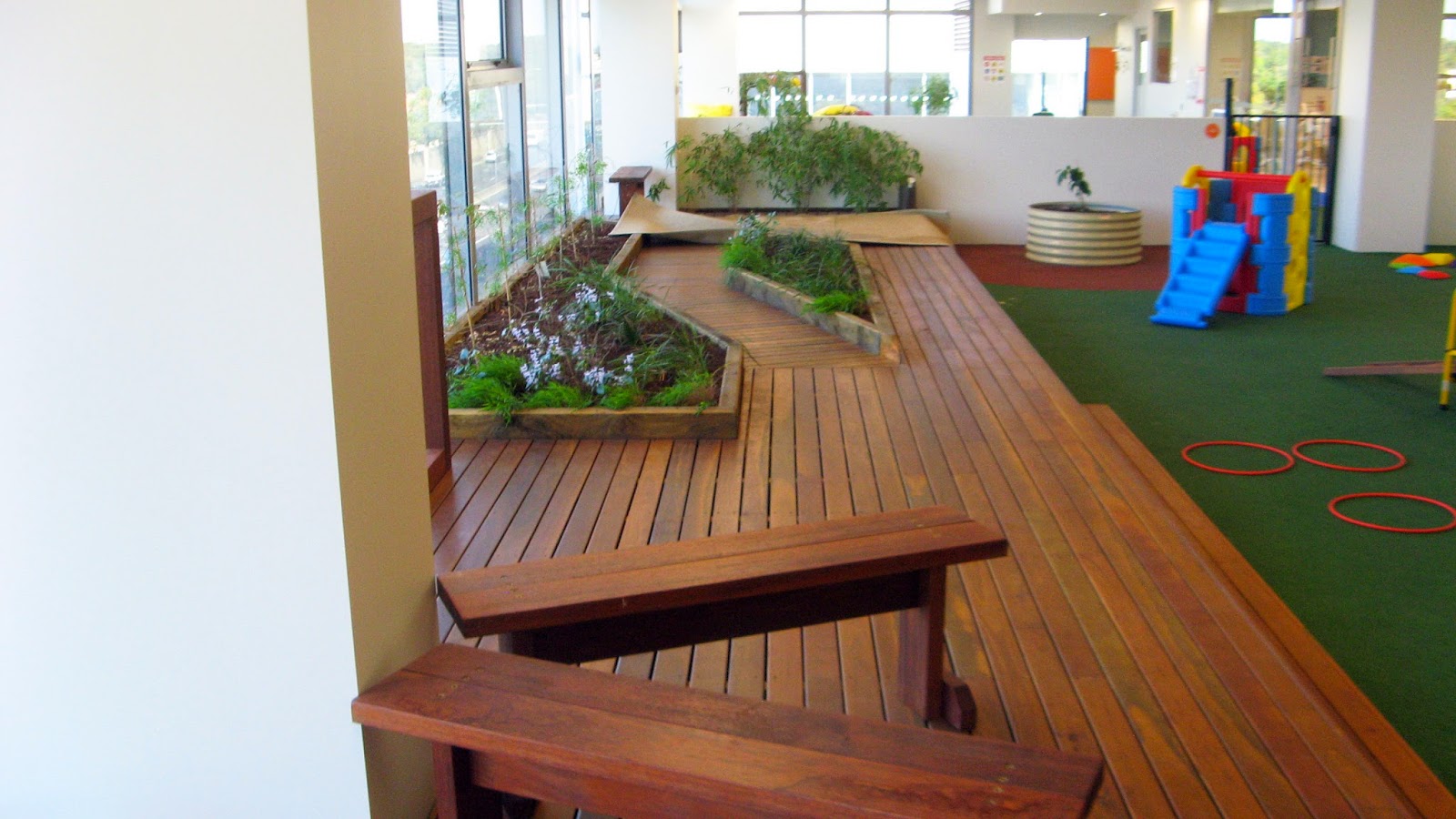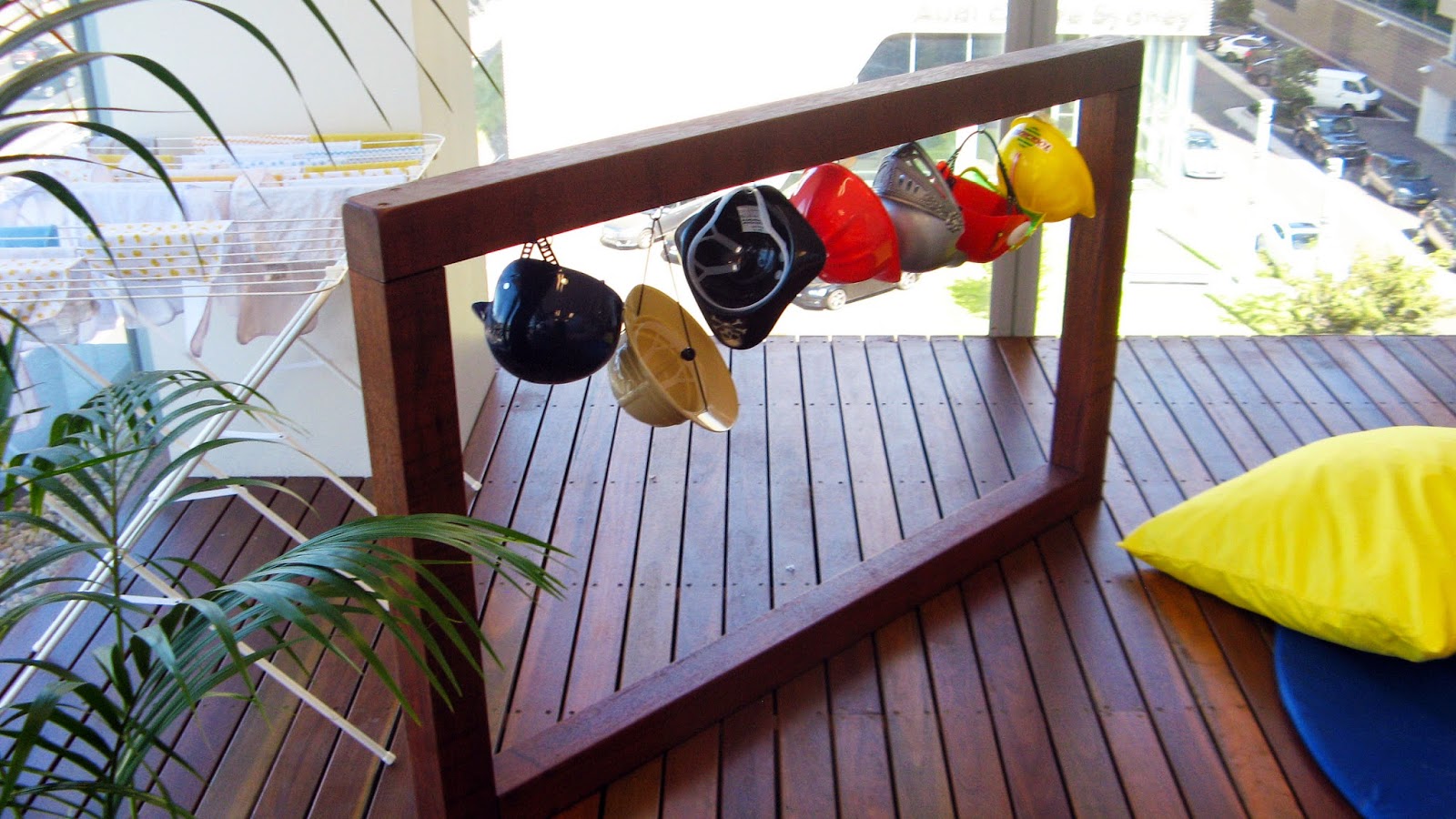With a greater
development of Australian inner city areas I have noticed an increased trend to
integrate childcare centres, including the playspace, within the new
residential/commercial complexes, both usually above ground level. I understand
that the creation of indoor playspaces may be paramount in areas of the world
that experience extreme temperature variations but this is an emergent and
challenging trend in Australian childcare design. Challenging and rewarding in
that I have been able to work with developers and architects who are aware of
the benefit of natural playspaces and are happy to consider them integral
components of any new centres' design.
The change in need
is recognized by many Sydney metropolitan councils, in
particular Sydney City Council. In a 2013 Assessment it commissioned into the
projected need for childcare in their LGA the report states "There
are a total 1,054 places planned across the City’s Village Groups through
Development Applications (DAs) currently with the City. At the time of this
study, there were four approved DAs where work has commenced on the building
equating to a minimum 258
places." http://www.cityofsydney.nsw.gov.au/__data/assets/pdf_file/0007/189835/CCNA-7-Nov-2013.PDF
In recognition of the
need, and acknowledging the restraints, that Councils' Developmental Control
Plan (DCP) states, "The City of Sydney has approached the
challenge of site suitability in a way that responds to the unique local
context. The Child Care Centres Development Control Plan (DCP) 2005,
acknowledges the need to cater for the child care needs of resident and
workforce populations. Recognizing the higher density and constrained land
supply in the area, the DCP provides for child care facilities to be located
above ground floor, particularly in the central business district and
surrounding high density areas where there are large employers. The DCP allows
approval for above ground child care facilities with indirect access to open
space if there are no viable alternative sites.
http://www.cityofsydney.nsw.gov.au/__data/assets/pdf_file/0012/142041/Guidelines-Childcare-Centres.pdf
Many metro council's
require that any indoor play areas should, " have access to sunlight,
natural ventilation and views to the outdoors, have convenient access between
the indoor and outdoor areas, and enable clear lines of sight to allow for
staff supervision from other areas of the child care centre".
In the past few years
I have designed a total of 10 -15 enclosed and
semi-enclosed playspaces, half in the city of Sydney LGA. All of the
centres were created in response to an increased population density, a need
for childcare from the new population centre and an inability to create
traditional centres due to lack of suitable existing sites or land
availability.
In the process of
design collaboration, a few essential truths have emerged in respect to the
success or failure of proposed centres. These are summarized below:
- If you're building your centre on a concrete slab, whether that be on ground level or the 5th floor, involve your landscape designer before the building is constructed. This way prior discussions can be had as to the types of play elements that will be required in the design and how details for water/electrical, access, drainage, waterproofing, soundproofing and slab structural integrity can be accommodated.
- Council requirements for adequate light
and ventilation are important, if you don't have them then it's odds on
that you won't get construction approval. It is a lot easier and cheaper
to choose or design an appropriate building for a childcare centre than
attempt to meet council requirements by retro-fitting it to meet these
requirements.
- If you're going to have plants as natural
elements in your playspace seek advice as to what plants will be
appropriate, they need to be able to establish and grow in semi shaded to
shaded areas, be non-toxic and child friendly.
- Plants also require water, nourishment
and maintenance. It is not enough to depend on children or
a horticulturally gifted staff member to provide these services.
Engage a suitably qualified horticulturalist (with an up to date Working
with children check) to provide a maintenance plan and services.
It shouldn't cost a lot and the benefits to your playspace environment
will be pleasantly noticeable.
- You can't depend on staff or children to
water the plants and air conditioned environments dry out soil and plants
very quickly. The solution is to invest in a sub-surface drip irrigation
system set to an auto timer that can be installed during the construction
phase. The system should be installed by a suitably qualified plumber or
tradesman with TAFE certification and should contain a back flow
prevention valve and an auto shutoff valve to prevent flooding in case the
system is damaged.
- Whether plants are installed as natural
elements or in an internal green wall they require sufficient
sunlight to photosynthesis. Plants with limited sunlight will
grow slowly and will not flower or fruit. In an internal environment you
can provide sufficient sunlight by positioning plants near windows,
under skylights and utilizing low thermal emissivity glass. You can also utilize plant
grow lights. There are a number of different types of grow lights, some
specifically for types of vegetation. The lights should be chosen by a
suitably qualified horticultural specialist and installed during
construction by a qualified electrician.
- A number of centres may chose to install
a green wall to increase the natural elements in a playspace. The rate of
plant failure of green walls that are not designed and installed properly
is high. Green walls are not a
low maintenance feature. They may require both irrigation and
lighting systems and the plants should be chosen by a suitably qualified horticulturalist and be non-toxic and child friendly. A number
of Councils will also require you to submit a
plant maintenance plan as part of the DA process.
- A number of centres are choosing
to utilize artificial grass, installed over soft fall, in
their playspaces. There are particular standards for grass
that is to be used in an internal playspace. To be compliant to the BCA
(internal floor coverings) the grass needs to meet appropriate fire
resistance standards. We also specify Australian made grass, to ensure a
lead free product is installed.
Montessori
Academy -Victoria Park childcare centre was designed in 2013, Approved
for construction in 2014 and built later that year. It
was licensed in early 2015 and has been
operating continuously since then. The Centre is on the Fifth
floor of the East Village complex and overlooks South Dowling Street & the
Eastern Distributor Motorway
The East Village
playspace was designed to have an open ventilation system, Low-E glazing and a
built-in irrigation system so the plants get all they need to keep them
growing.
The design included a
large green wall to help to cool and oxygenate the playspace and plenty of
opportunity to play with two sandpits, log steppers for seating and climbing,
timber balance beams and slides. The design included hidden quiet areas and
areas for meditation.
The design included
raised garden beds to host a number of sensory native trees, shrubs, grasses
and climbers and separate raised beds to be used for growing edible herbs and
veggies.
It was great to get to
see the completed centre, speak to the director and take the photographs
attached below.
















